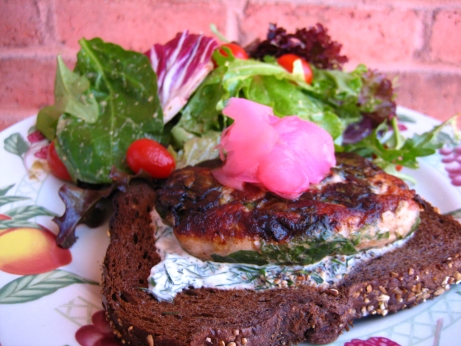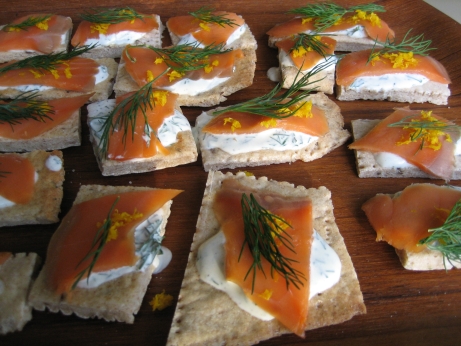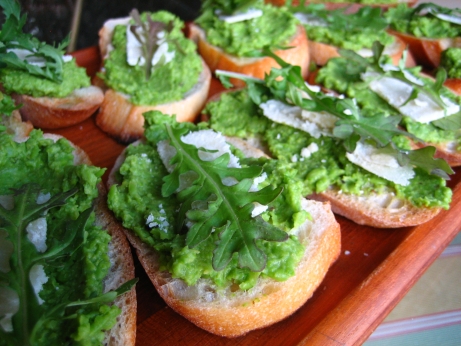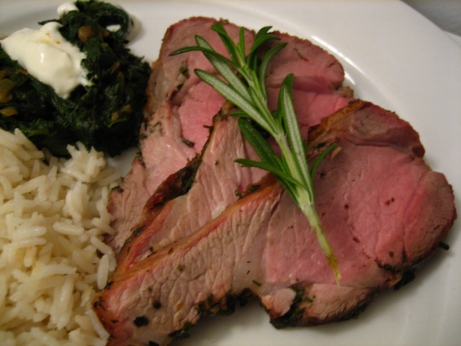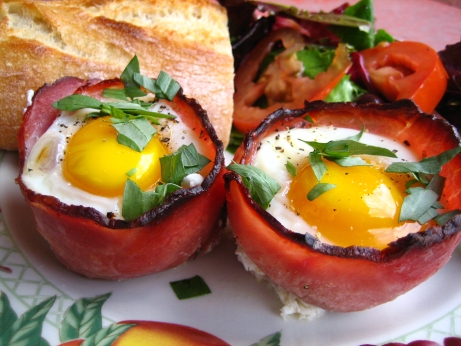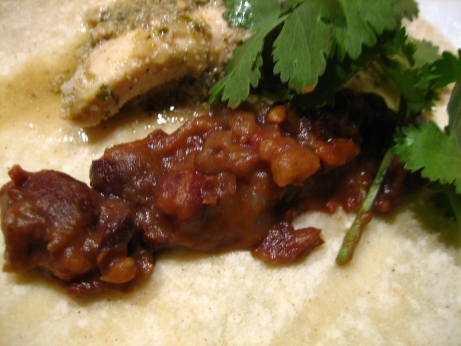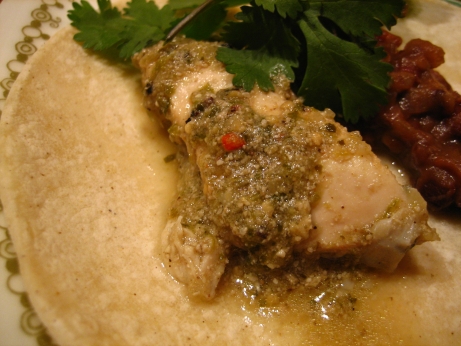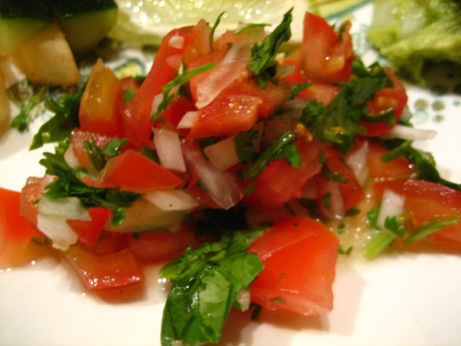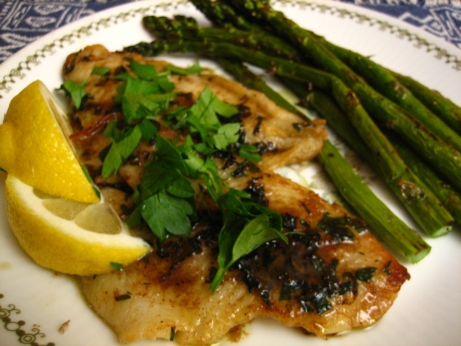
No recipe for this one.
This is one of the simple and elegant classics that make French food so revered. It’s the first dish Julia Child had in France, and she credits that lunch of sole meunière as the catalyst for her cooking and eating career. This is about the simplest possible fish preparation there is, a fillet of dover sole is dredged in flour, then pan fried in browned butter and parsley. A quick sauce is made of the pan juices with a bit more butter, salt, and lemon juice.
When the ingredient list is short it’s a good cue to make especially sure that everything you’re using is of the best possible quality and freshness. If you use butter that has picked up a bit of flavour from the fridge, there’s no way you’re going to be able to hide it here. Unfortunately fresh local sole isn’t really a possibility in North America. Dover sole is sometimes available, but it’s fished in Europe. Gray sole is much more readily available, but it’s not actually in the same fish family, and the taste is different. Nevertheless gray sole is what I used, and I was thoroughly pleased with the results.
The simplicity and balance of the flavours here are the reason it’s a classic. It wouldn’t be half as good if you didn’t brown the butter properly, the nutty aromas make the dish. The lemon simultaneously adds sweetness and acid, and the faint flavour of parsley actually serves a purpose in a dish this subtle. The dredge in flour means you get a crispy coating, and the aromas of just baked bread are a bonus. The fish was moist and succulently flaky. My only complaint is that cooking the parsley along with the fish makes it kind of black and ugly by the end. I added a little fresh just for looks. The flavour of the fish is very mild, and it takes a delicate preparation to allow it to play the lead. Everything in the dish is there to support the fish, and they do a great job of highlighting it without stealing the spotlight.
I’ve been eagerly following this season of “Top Chef”, and I’m waiting with baited breath for the finale. One of the contestants, Casey, has had her food called “soulful” by half a dozen of the best chef’s going. The bravo forums have been abuzz wondering what soulful actually means. The best definition I’ve heard is that the food is well seasoned, balanced, thoughtful, and instantly familiar. It should tap into our collective sense of childhood favorites and family classics. This dish is a quintessential example of soulful. It’s not fussy, it’s just good.
